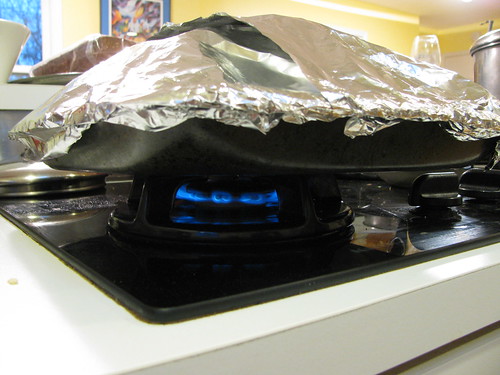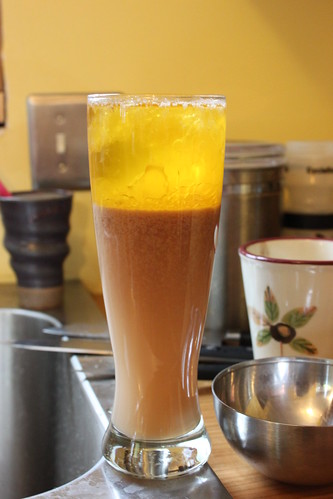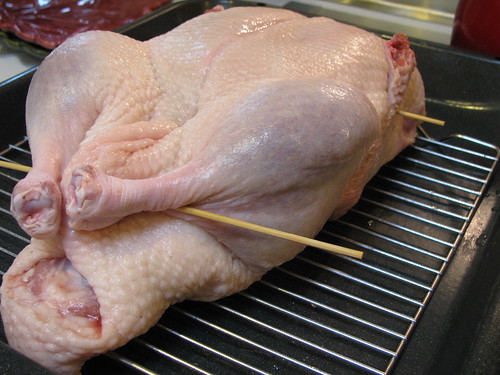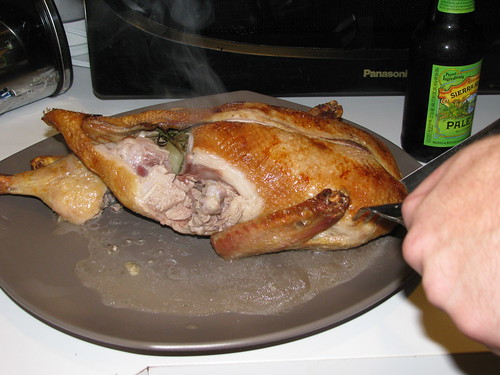A food truck with a name dear to our chicken-loving hearts opened recently in close proximity to our house. Alex visited first, took pictures, and wrote this review:
Clintonville is seeing an influx of food trucks recently. Despite the objections of various stick-in-the-mud types, the diversity is only growing.
The Coop is the latest truck to arrive on the Clintonville scene. As the name suggests, it is a poultry-themed establishment and happens to have thrown out a shingle on the corner of Indianola and Cliffside. As this is only a few blocks from our house we had their fare (one of each thing on the menu) for our Wednesday family dinner.
The dishes were:
French Omelet BLT sandwich - Delicious folded omelet with thick-cut bacon and fresh veggies on white bread. The whole thing melted in your mouth and was done exceptionally well.
Udon noodles with duck - This was probably the standout dish of the evening. The noodles were well cooked, the duck was delicious and it was all complimented wonderfully with a hot and sour broth. This was a fabulous dish that I could eat every day. Of course, as with their other dishes, it was topped with an over-easy egg.
Chorizo Hash - Exactly what the name describes. Very nicely done with chopped up bits of corn tortilla incorporated into the mix. The over-easy egg made for a delicious sauce over the hash after the yolk was broken open.
Roasted Chicken Quarter (thigh/leg) over Corn with Parsley and Parmesan - This was a very simple presentation that pleased the ever-picky Lillian. The chicken was cooked very well and the corn mixture was creative and delicious.
Overall, we left full, satisfied and with a very favorable impression of Coop. It's not the cheapest food truck out there, but come on, you can order duck on the side of the street. Give it a try, you definitely won't be disappointed.
I couldn't resist Alex's raving and took our family on the short walk to the vintage cart on October 13. Here's my take:
Alex wrote 'delicious' four times in his review. While it is the most over-used adjective describing food, The Coop might be deserving of the quadruple praise.
The chef/owner of Coop, Angela Theado, is a restaurant veteran. She features local ingredients including Ohio eggs, meat, greens and fruit in from-scratch recipes.
The menu changes often to reflect what is seasonally appropriate and available. Beverage options are Clintonville-roasted Thunderkiss coffee, Coke, and San Pellegrino. The Coop uses Eartha Limited eco-friendly serving dishes and offers recycling bins for patrons. Two picnic tables are available for seating and there is parking for at least four cars in the lot.
We tried the duck leg ($10, a steal) for Lillian. Cooked in fat as confit first and finished in the oven, the meat was fall off the bone delectable. Lil gobbled it up while I savored the kale. Dressed lightly when raw, the tender leaves wilted slightly under the heat of the duck. Not wanting to upset the picky kid, I ate the pepper giardiniera on the side. This was the right choice for our family - Lil would have balked at the heat - though I can taste how well it would pair with the succulent duck meat.
I ordered the Omelet BLT ($7) after hearing about it from Alex and several friends. This high stacked sandwich layers bacon, arugula, tomato, and a gently cooked egg and cheese omelet between two slices of grilled Texas toast. It is saucy but manages to hold together for eating. Some don't enjoy the intrusion of soft egg in a BLT but I liked how The Coop transformed a summer tradition into a more filling meal.
My sister Megan has become a regular at The Coop. By happenstance, she pulled up just after our food was served. She ordered the Chorizo Hash ($8) and ran off to work before I could taste it. I snapped a few pictures to capture the sweet potatoes covered in Ohio bison chorizo sauce, egg, and cheese.
Angela told me that The Coop will continue operating until the water lines freeze. Water lines for a food truck? Yep. One difference between The Coop and many other food carts is that it has a full dish station to handle the skillets in which Angela prepares each dish to order. While having to hook up to water makes this truck less mobile than some, a fresh skillet for each patron means that The Coop can accommodate food allergies and play with a wider range of ala minute cooking styles than those carts with a grill top alone.
More than the local sourcing, delectable dishes, and sustainable practices, what diners will like enjoy most about The Coop is the care with which the menu is planned. Rich duck confit needs a zesty accompaniment like citrus dressed kale. Sweet potato hash begs for a balance like spicy chorizo sauce to come off as a pleasant savory dish. Dishes include vegetables as thoughtful components. And everything IS better with an egg on top.
The Coop Current location: Cliffside and Indianola, 43202, look for the sweet blue pickup or yellow lights after dark Cash or credit accepted Website Facebook












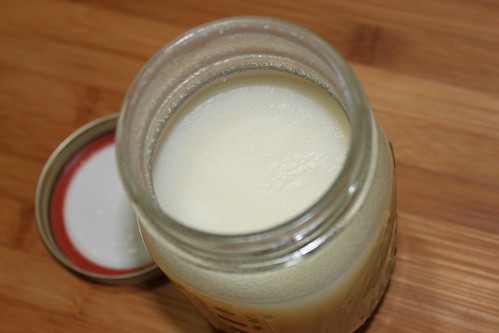
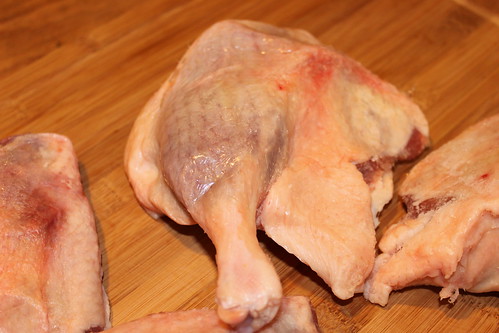
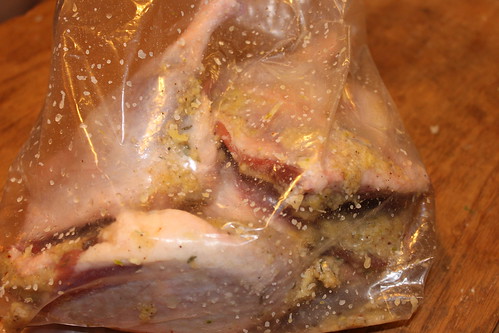


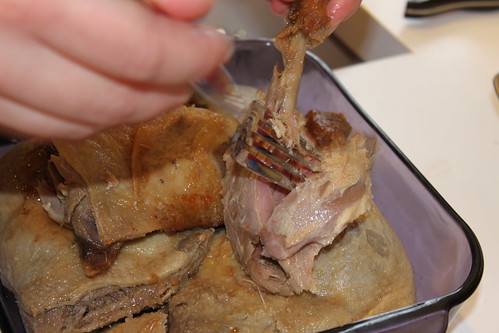
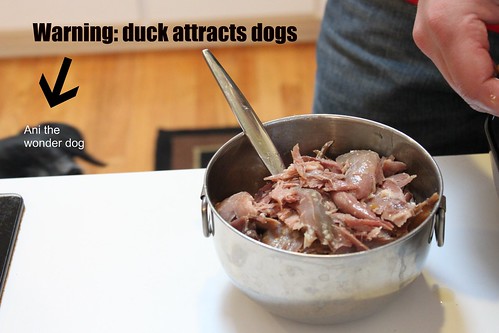
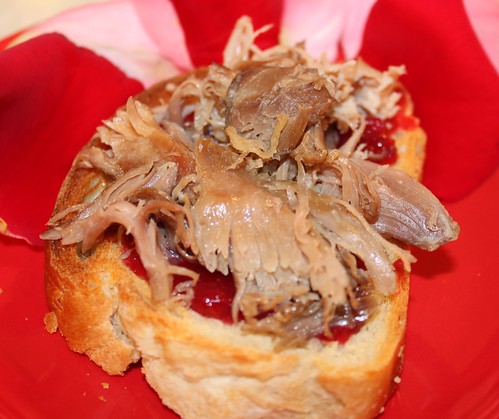
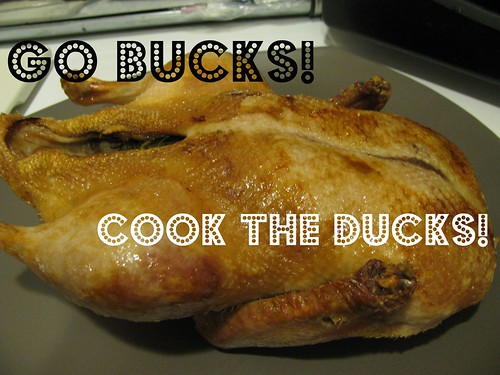 The Rose Bowl is days away. The Ohio State Buckeyes are playing the Oregon Ducks. Alex and I are both alumni and football fans. We are bringing a duck confit dish to a Rose Bowl party to poke fun at the opposing team's mascot.
The Rose Bowl is days away. The Ohio State Buckeyes are playing the Oregon Ducks. Alex and I are both alumni and football fans. We are bringing a duck confit dish to a Rose Bowl party to poke fun at the opposing team's mascot. . This method encompasses a preliminary steaming step followed by a more traditional roasting process. The end result is succulent meat that is tender, moist and not in the slightest bit greasy.
. This method encompasses a preliminary steaming step followed by a more traditional roasting process. The end result is succulent meat that is tender, moist and not in the slightest bit greasy.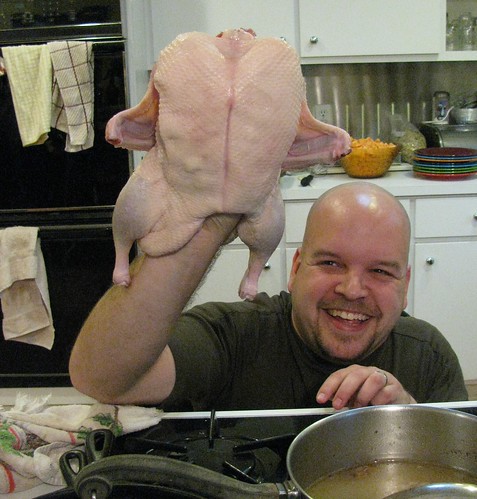
 Aggressively salt the cavity of the bird and place it breast up in a metal roasting pan on a rack so that it is at least an inch off the bottom. Fill the pan to just below the bird with liquid. Any mix of water, wine, apple cider or orange juice works well, keeping in mind that flavor will be imparted to the bird. A few aromatic vegetables like celery and onion are welcome additions to the liquid.
Aggressively salt the cavity of the bird and place it breast up in a metal roasting pan on a rack so that it is at least an inch off the bottom. Fill the pan to just below the bird with liquid. Any mix of water, wine, apple cider or orange juice works well, keeping in mind that flavor will be imparted to the bird. A few aromatic vegetables like celery and onion are welcome additions to the liquid.